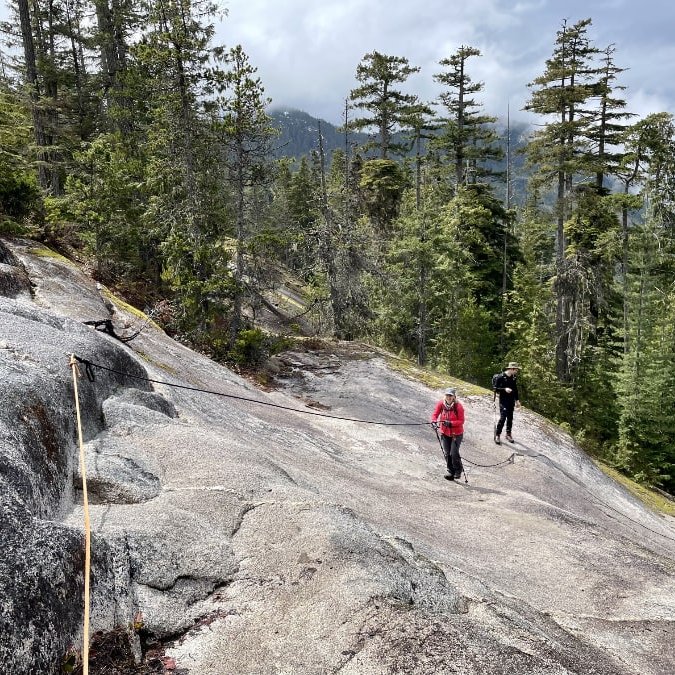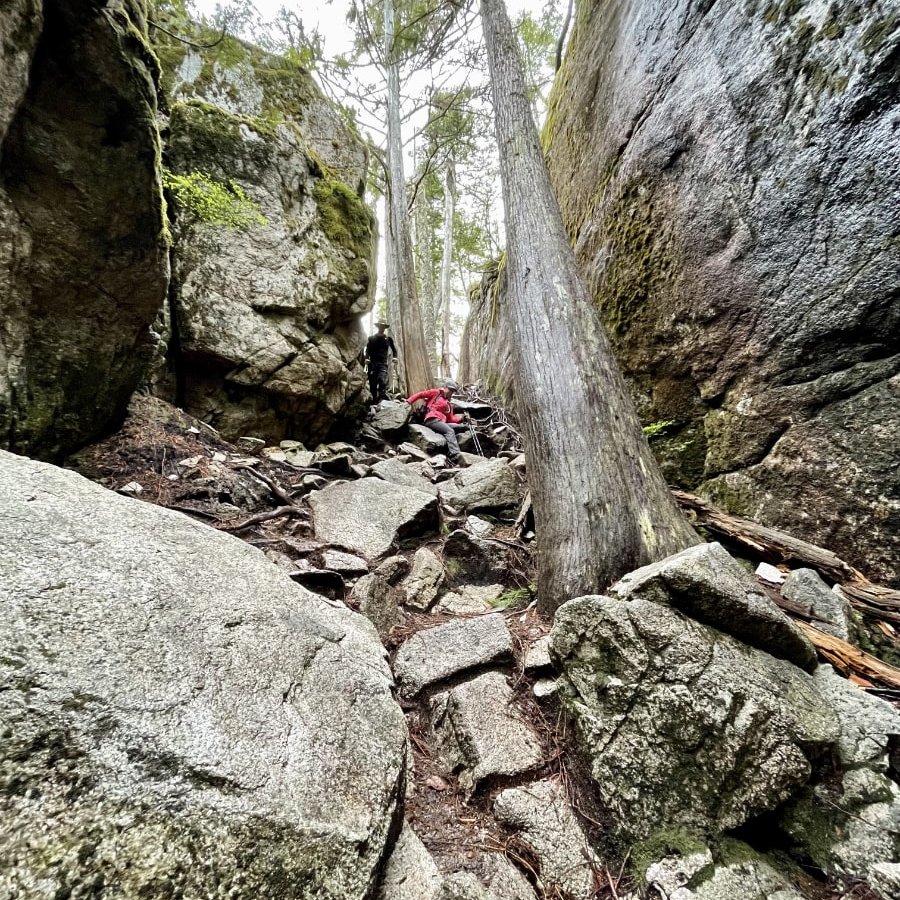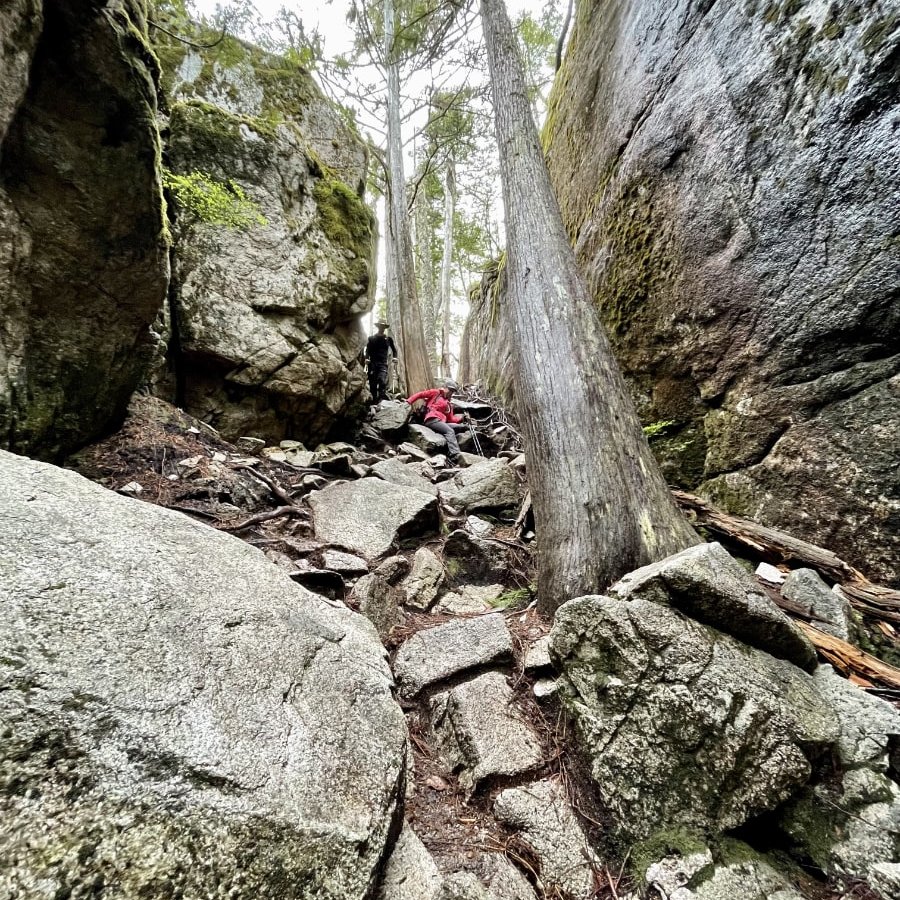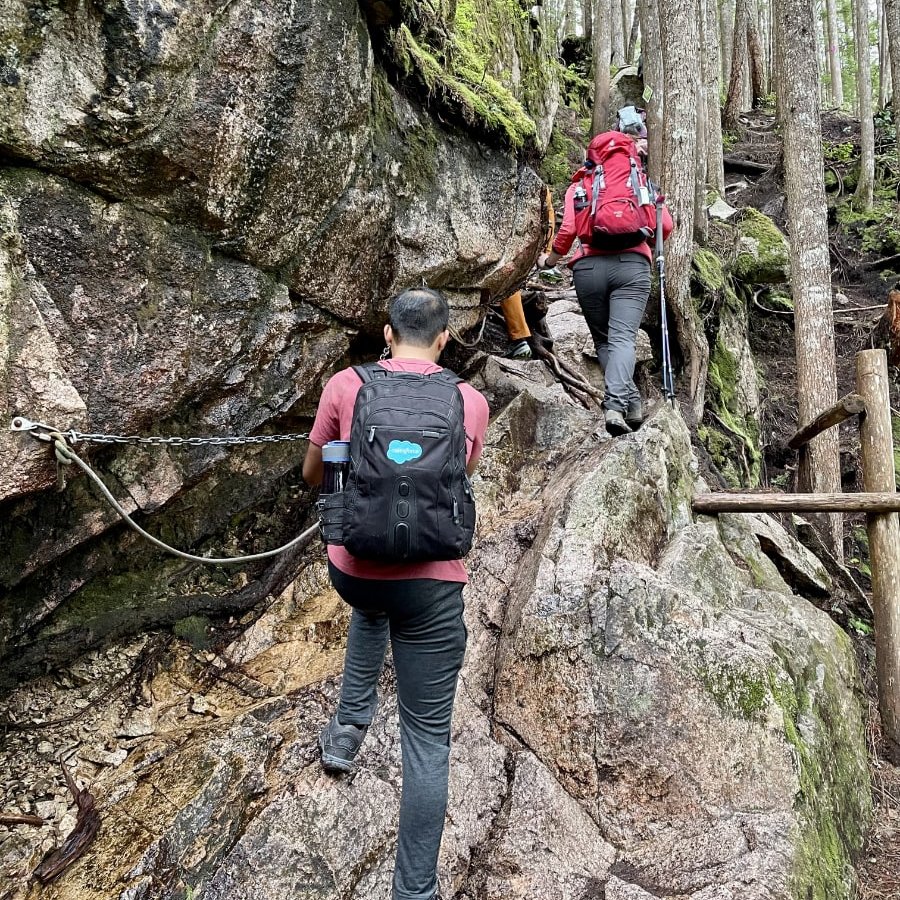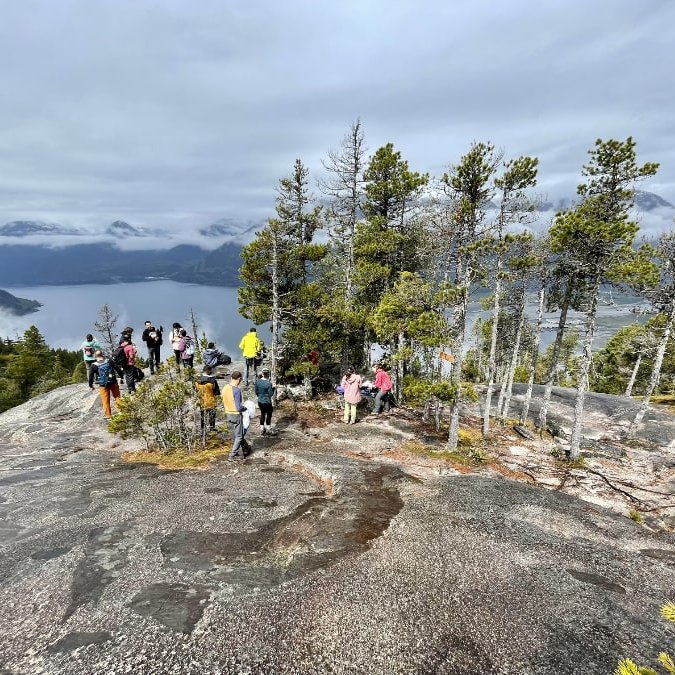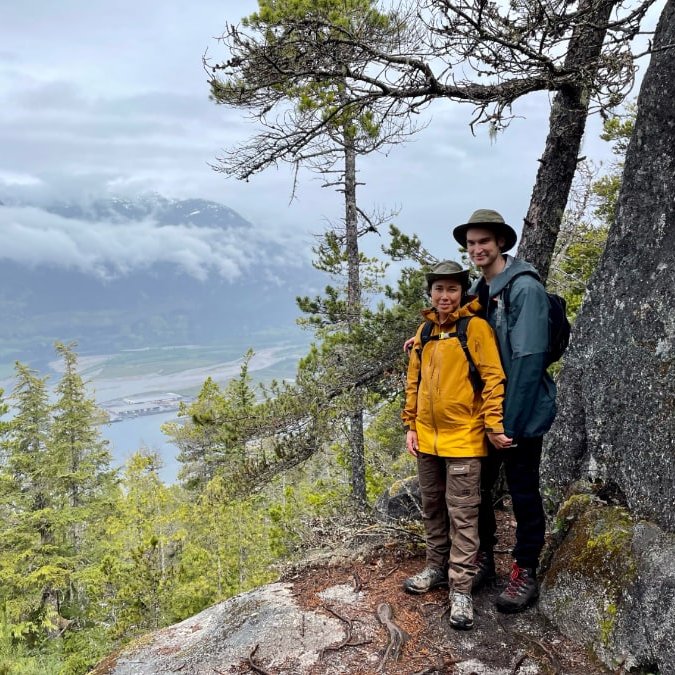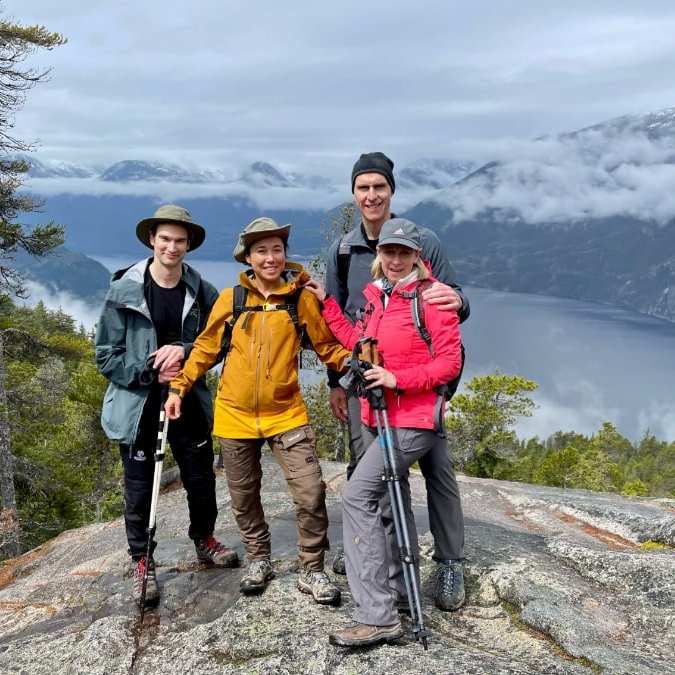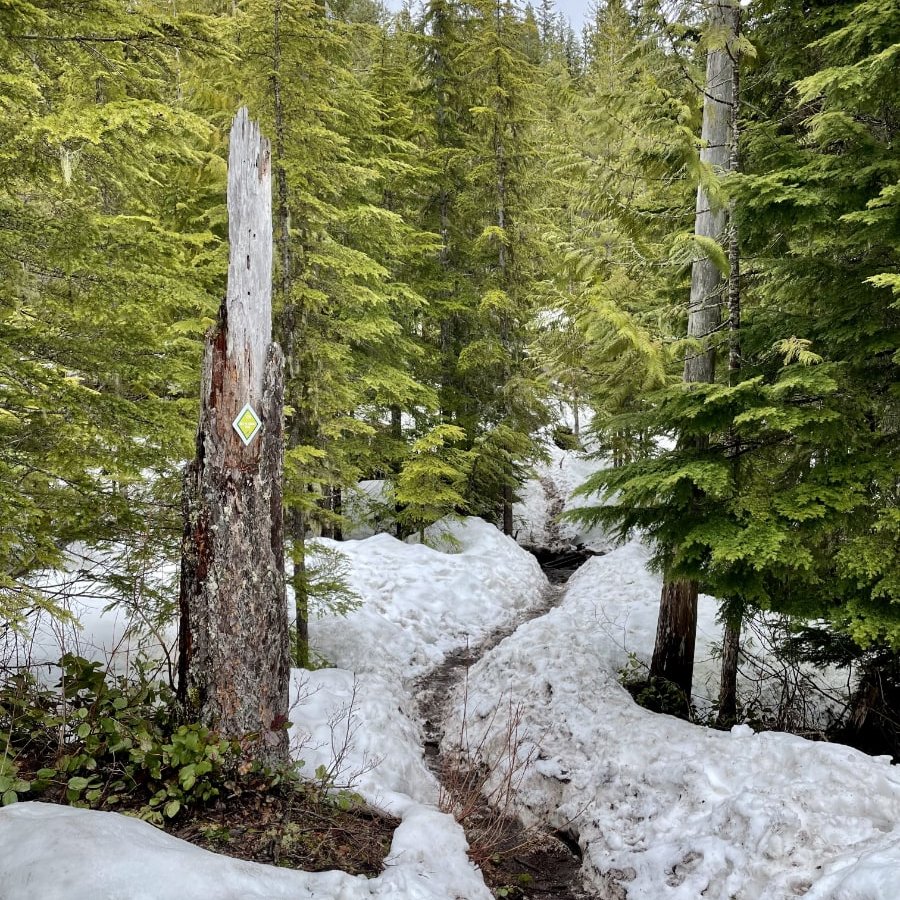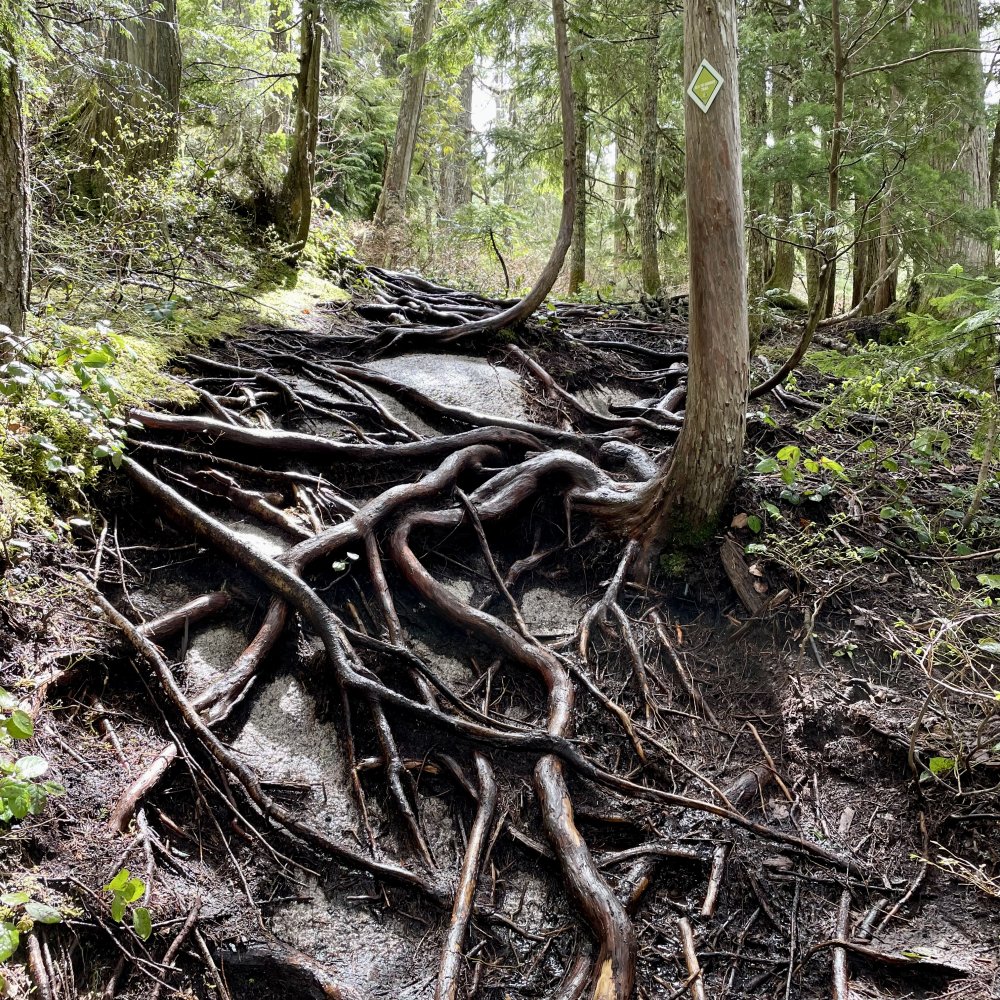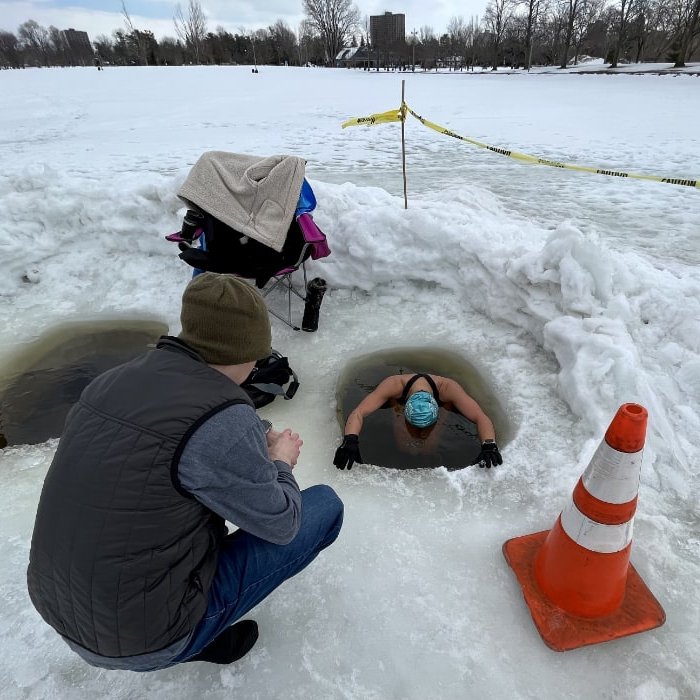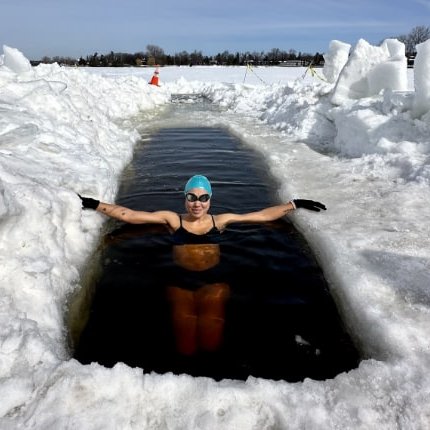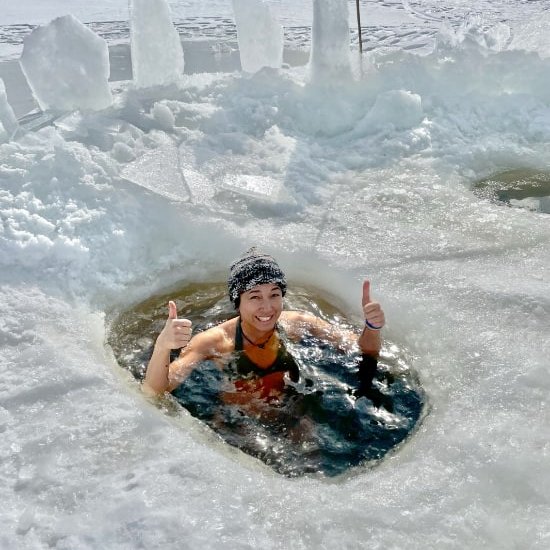Once I knew that I only had 2½ months left before leaving BC, I picked out a couple of hikes to do before heading off for good. I chose two that had similar stats, but on opposite sides of Vancouver, the Tikwalus Heritage Trail north of Hope, and the Sea-to-Summit Trail in Squamish. They are trails that also have completely opposing characters, with one being a well-advertised, major tourist destination while the other, is a little known trail mostly frequented by locals. I'll be starting with my trip report of the latter.
Sea-to-Summit Trail Stats
Difficulty: Hard
Type: Point-to-Point
Time: 3-4.5 hours
Distance: 7.5km
Net Elevation Gain: 918 metres
Season: April - October
Vying for Trail Space
Knowing that the Sea-to-Summit trail is well-frequented by both tourists and locals, Chris, me and a pair of friends decided to get there early since we were going on a Saturday in May. The weather was spotty, but not so spotty that it would deter serious hikers. We arrived just after 9am and there was still plenty of parking. We took our time getting organized and started our hike around 9:30am. Even with the early-ish start, there were still enough people starting their hike around the same time as us that it was a little crowded at the start of the trail. Fortunately, at least half of the people split off at the fork to hike the Chief, so it did thin out a little.

Stairs, Stairs and More Stairs
The first part of the trail is, in my opinion, the worst part. It's quite steep, but rather than having people scramble too much, the park organizers installed a whack load of steep stairs to get people moving quicker. I theorize that this was to reduce backlogs as it makes it easier for people to step aside and allow faster hikers to go ahead. I am not a huge fan of this, however. I'll take either a gently meandering sloped trail OR a steep scramble over stairs any day. There's no way to take steep stairs at a relaxed pace. You're either climbing up fast, or you're stopping and resting. I prefer to speed up or slow down at my leisure based on my level of tiredness, the technical features of the trail, or my level of interest in the surrounding natural features. Stairs robs the hiker of this choice. It also robs the hiker of the natural features of the trail by imposing human intervention. I breathed a sigh of relief when we got to the fork in the trail that set us on the main part of the Sea-to-Summit Trail.
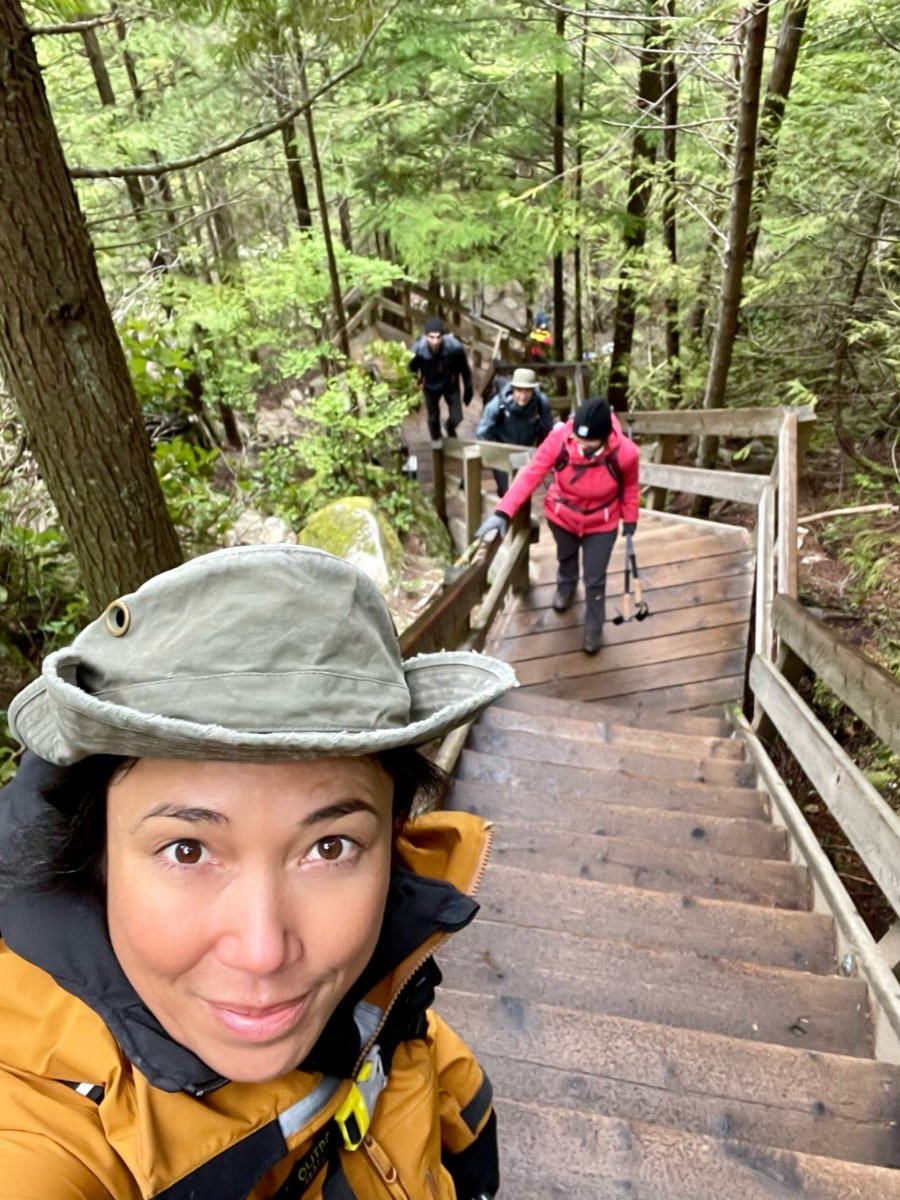
An Undulating Technical Trail Under the Gondola
Once you part ways with the people hiking toward the Chief, the number of people drops significantly as the trail goes under and past the gondola track. The trail becomes more natural and less manicured, while also levelling off with spurts of undulation and spurts of steep, more technical incline. I liked the tempo of the trail in this sense as while the steep parts are more tiring and require more focus on footing, those parts always seemed to be followed by a break in which it levels off going a little up, a little down for a while. There were a few parts where progress would become slower for some hikers, especially when there was a chain or rope assist, causing the occasional bottleneck, but it wasn't anywhere near as bad as the gluts of people at the start of the trail.
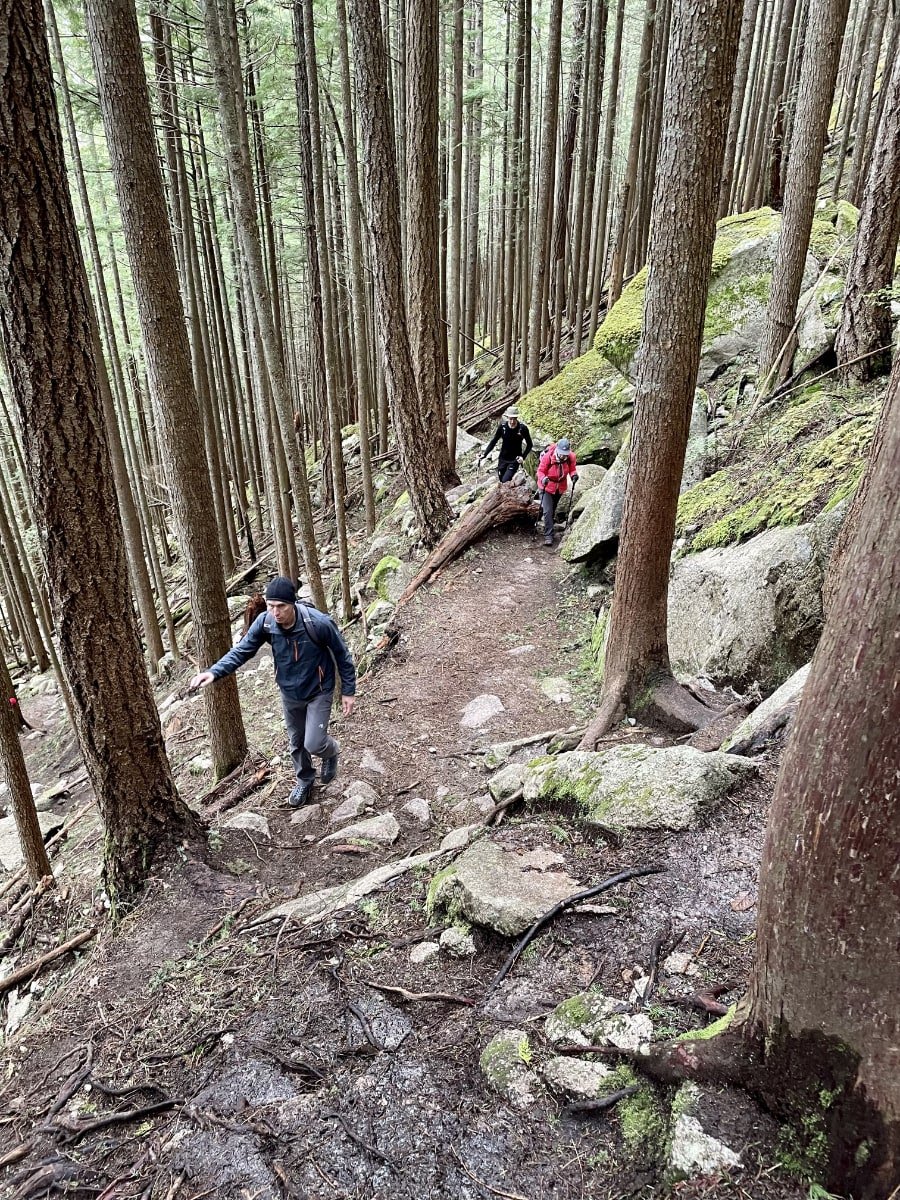
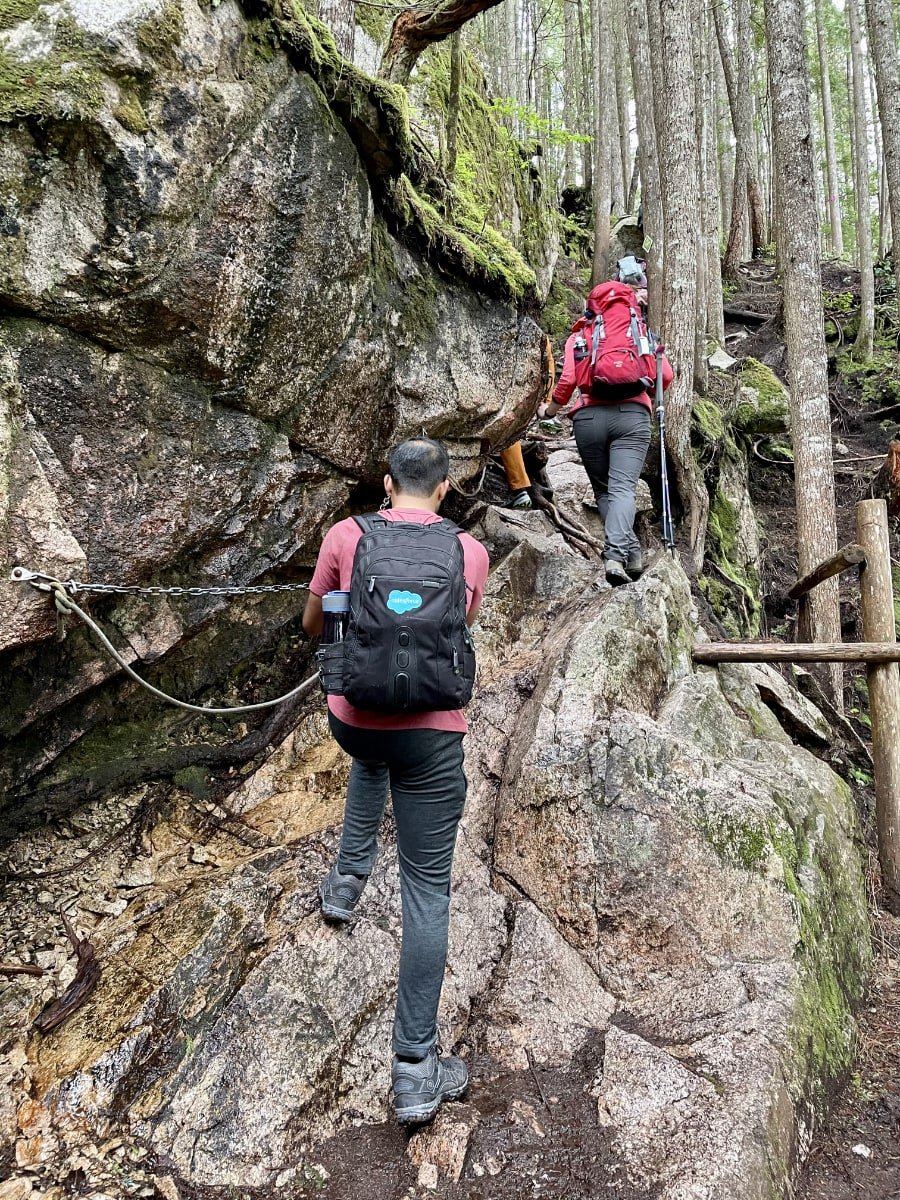
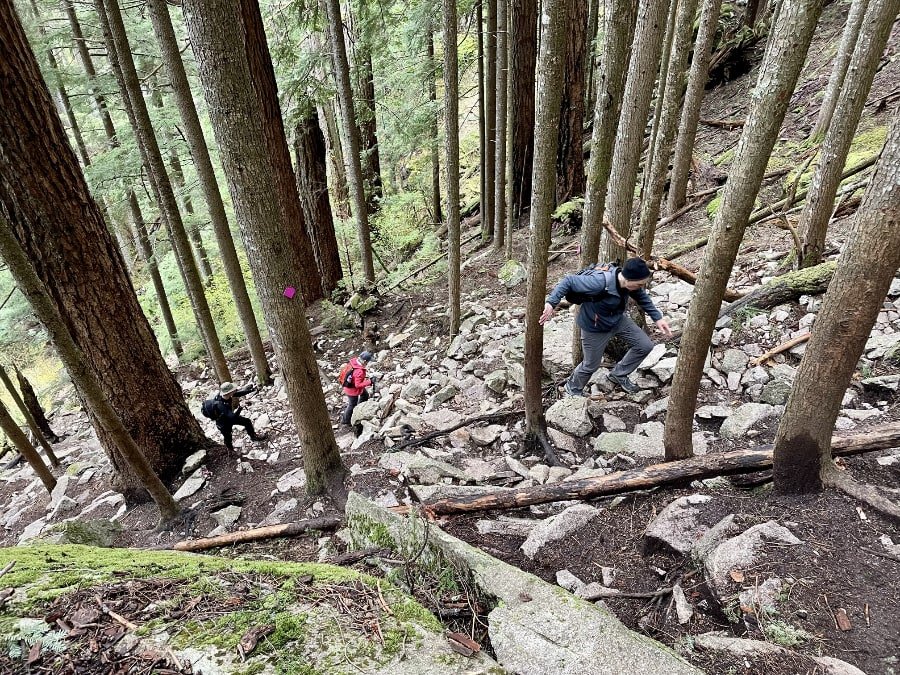
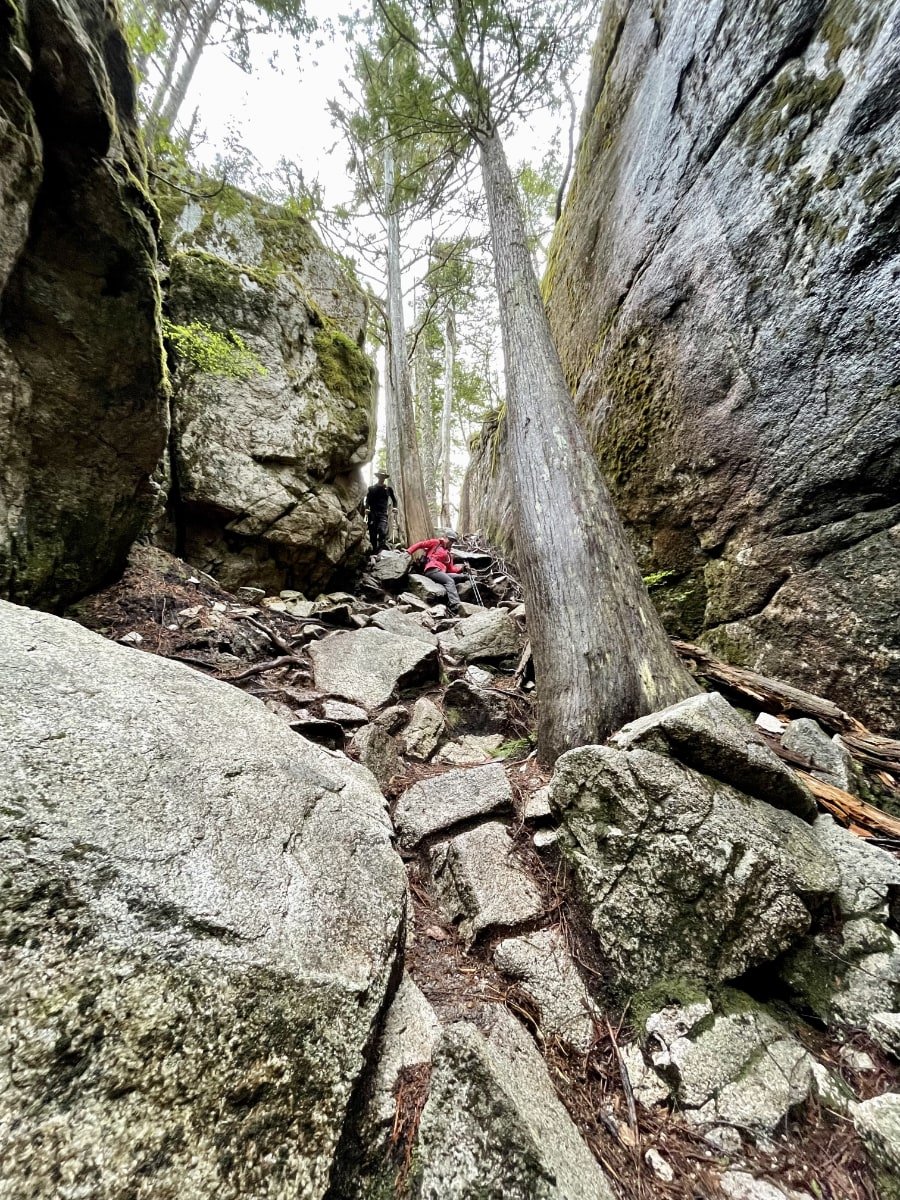
Natural Highlights of the Trail
There are a few notable spots where you will naturally want to stop and perhaps snap a few photos. The trail winds along a lovely waterfall, the Upper Shannon Falls. There is also a small rocky outcropping with a lovely view, almost immediately followed by the major viewpoint of the trail where many people stop to have a snack.
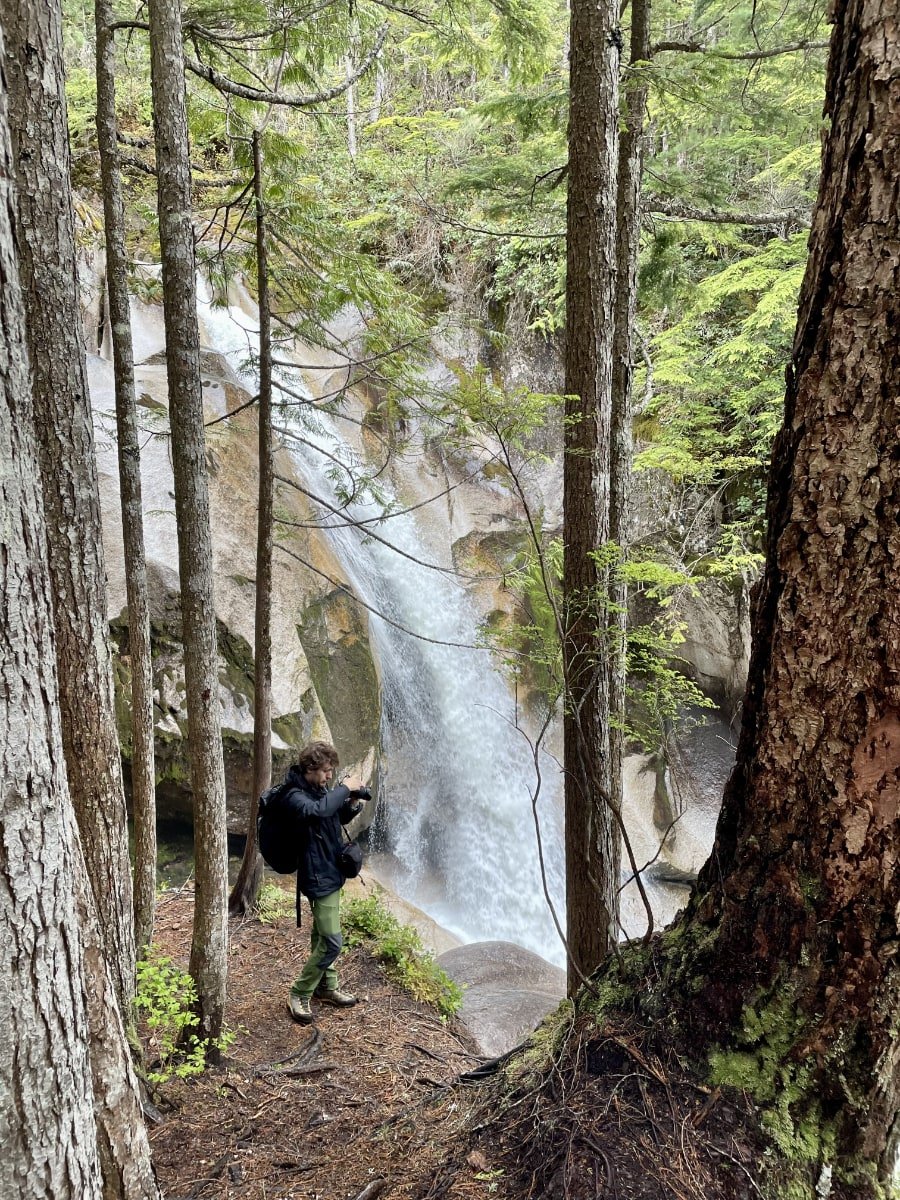
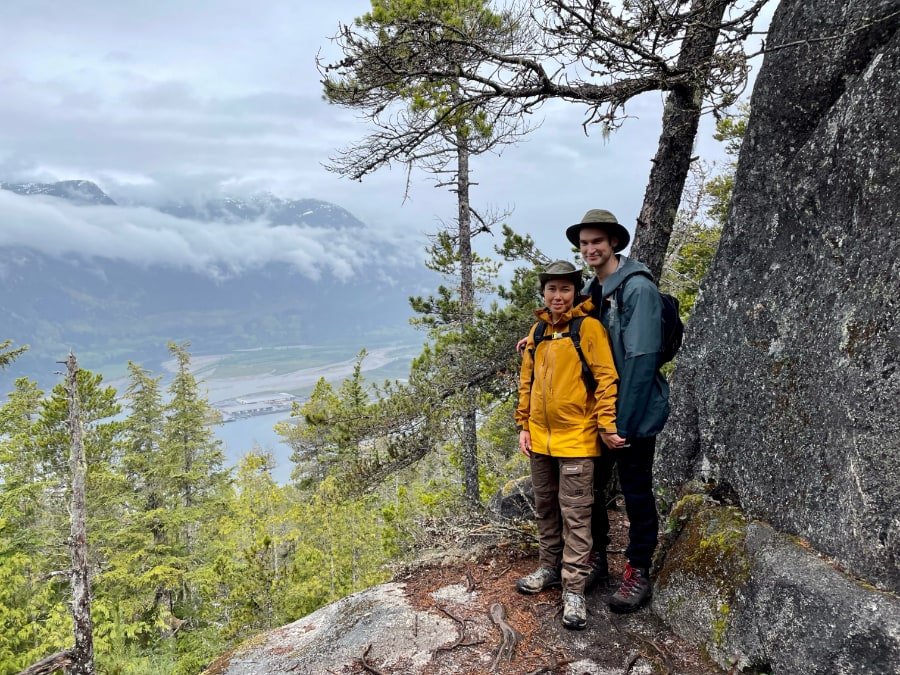
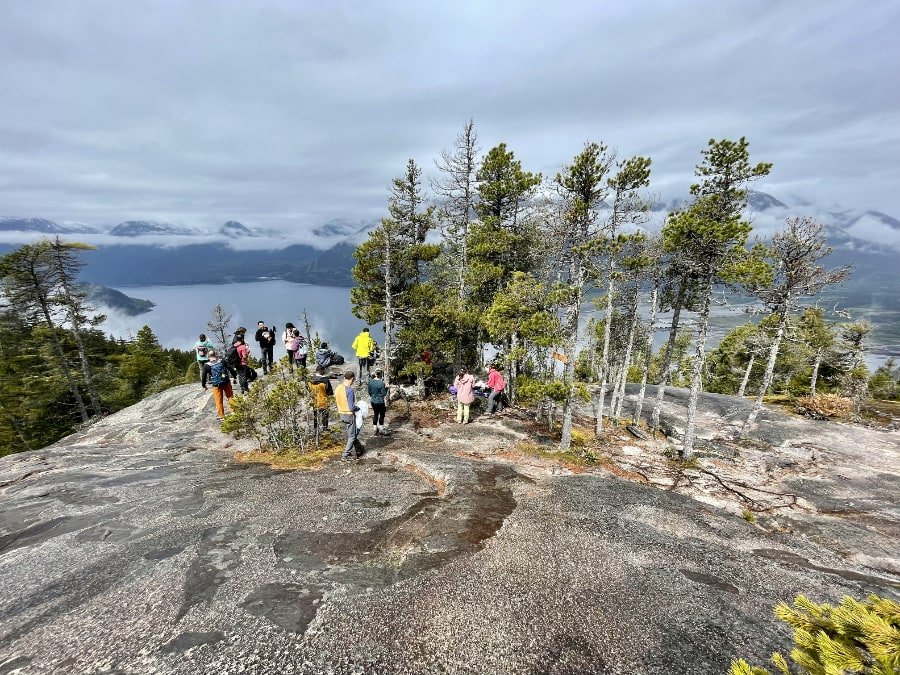
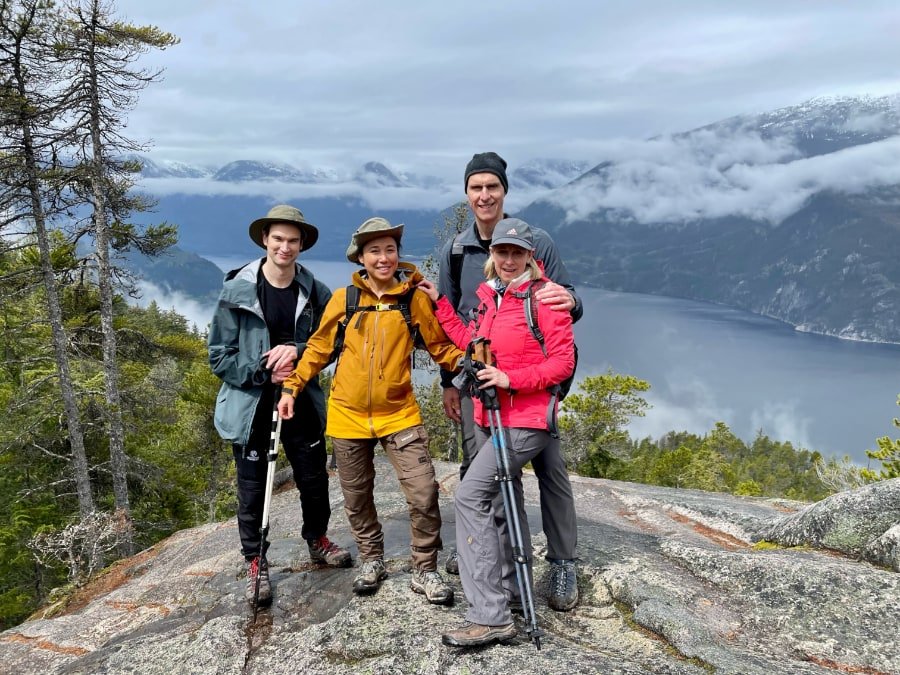
Early Spring Snow
While most of the snow was gone by mid-May (when we hiked it), there was still some snow at the higher elevations of the trail, along with streams of water from the run-off, some of which ran directly down the trail, some of which you hiked across via bridges made of natural wood fall. Please note that if you're hiking in the earlier spring, you might need to bring micro-spikes or crampons just in case, and in the later spring, you'll want waterproof boots with good tread as the trail can be quite wet and slippery, even on a sunny day due to the run-off.
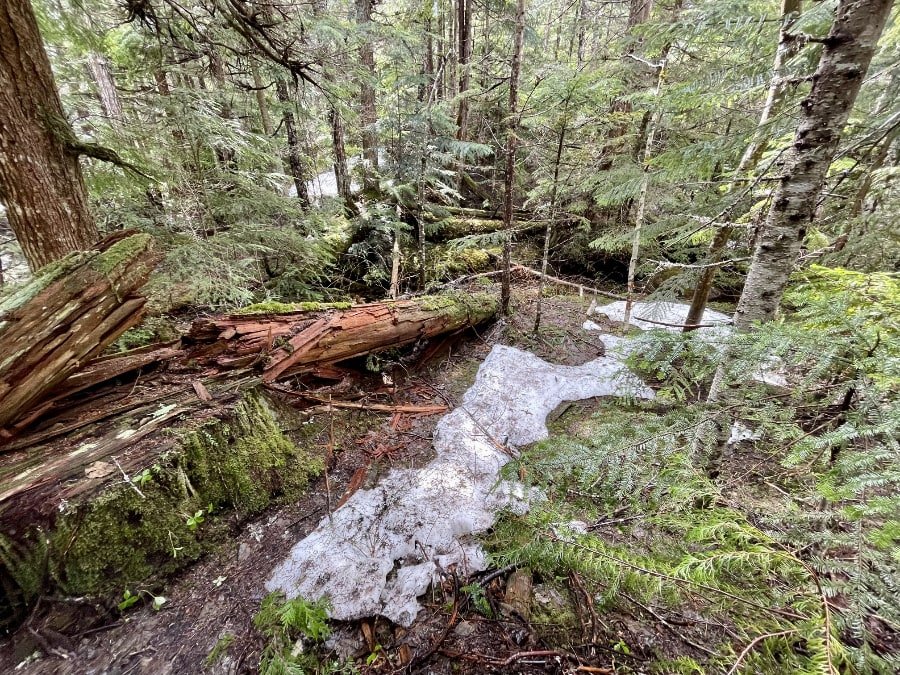
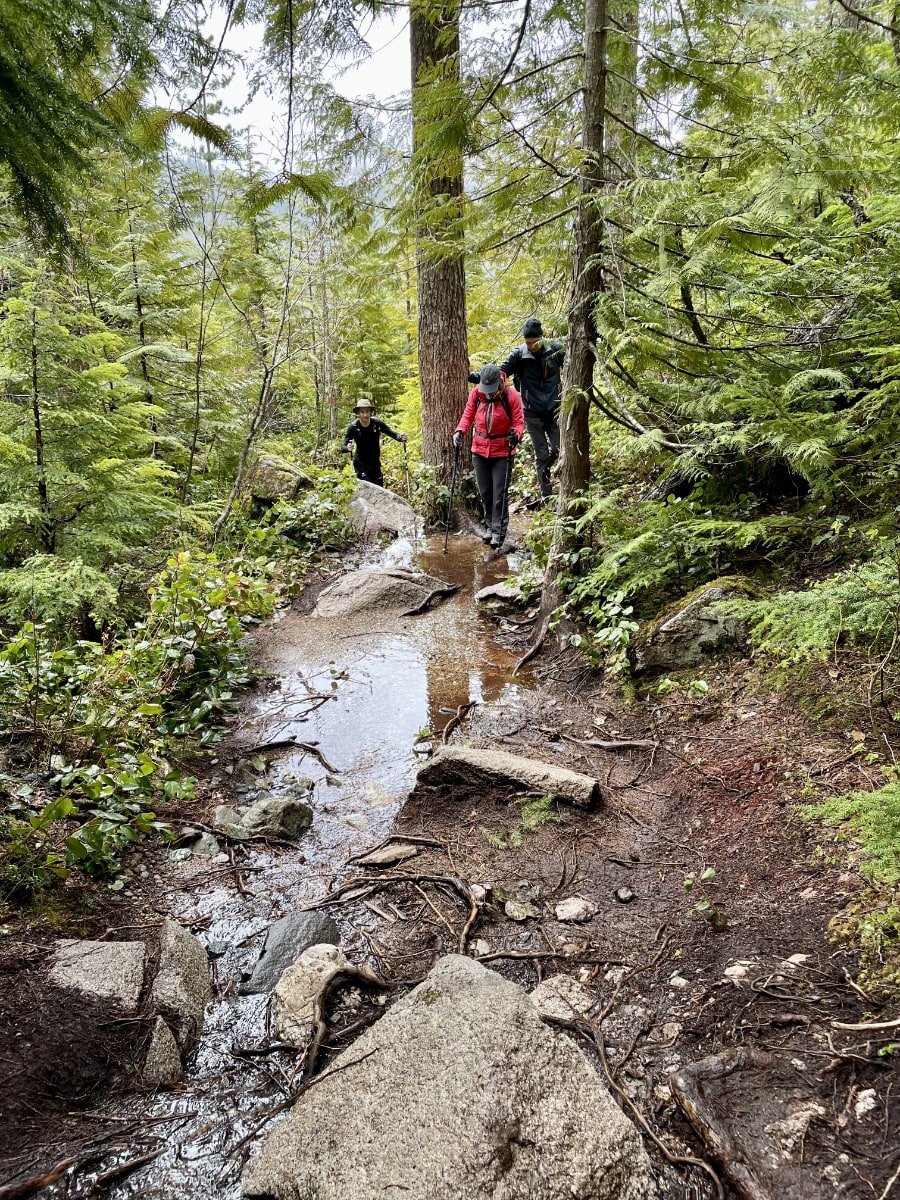
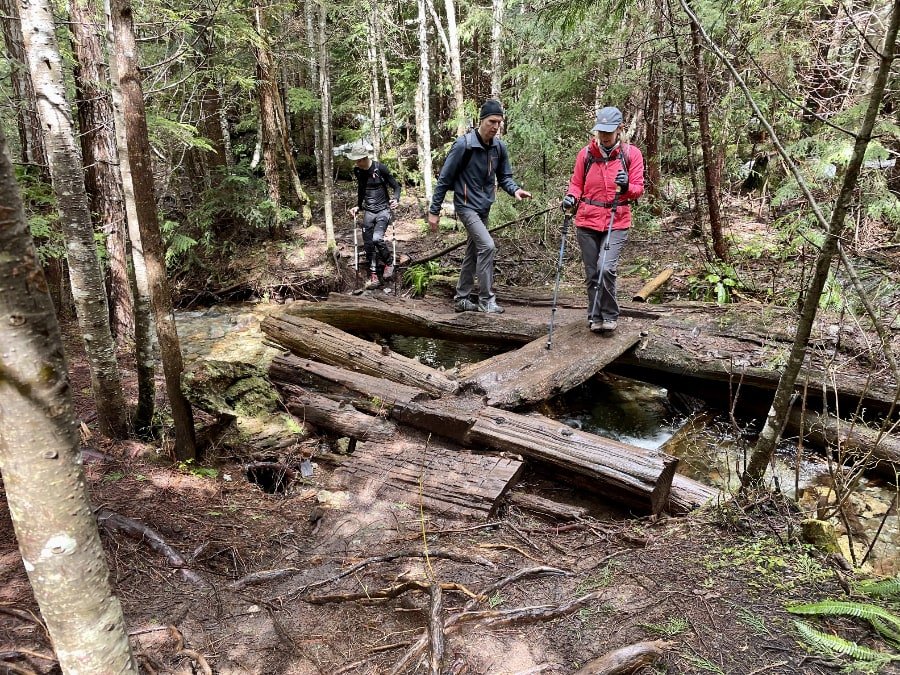
Rock Scaling with Ropes
The increasing number of gondola sightings lets you know that you're getting closer to the top. At this point, you get to scale up some large rocky terrain using the help of ropes to make your way up. Once you get past the rope section, you'll make your way through more trees and all of a sudden... snow! Or at least there was for us in mid-May. The snow was basically the end though. It was only a few minutes more before we got to the end of the Sea-to-Summit Trail.
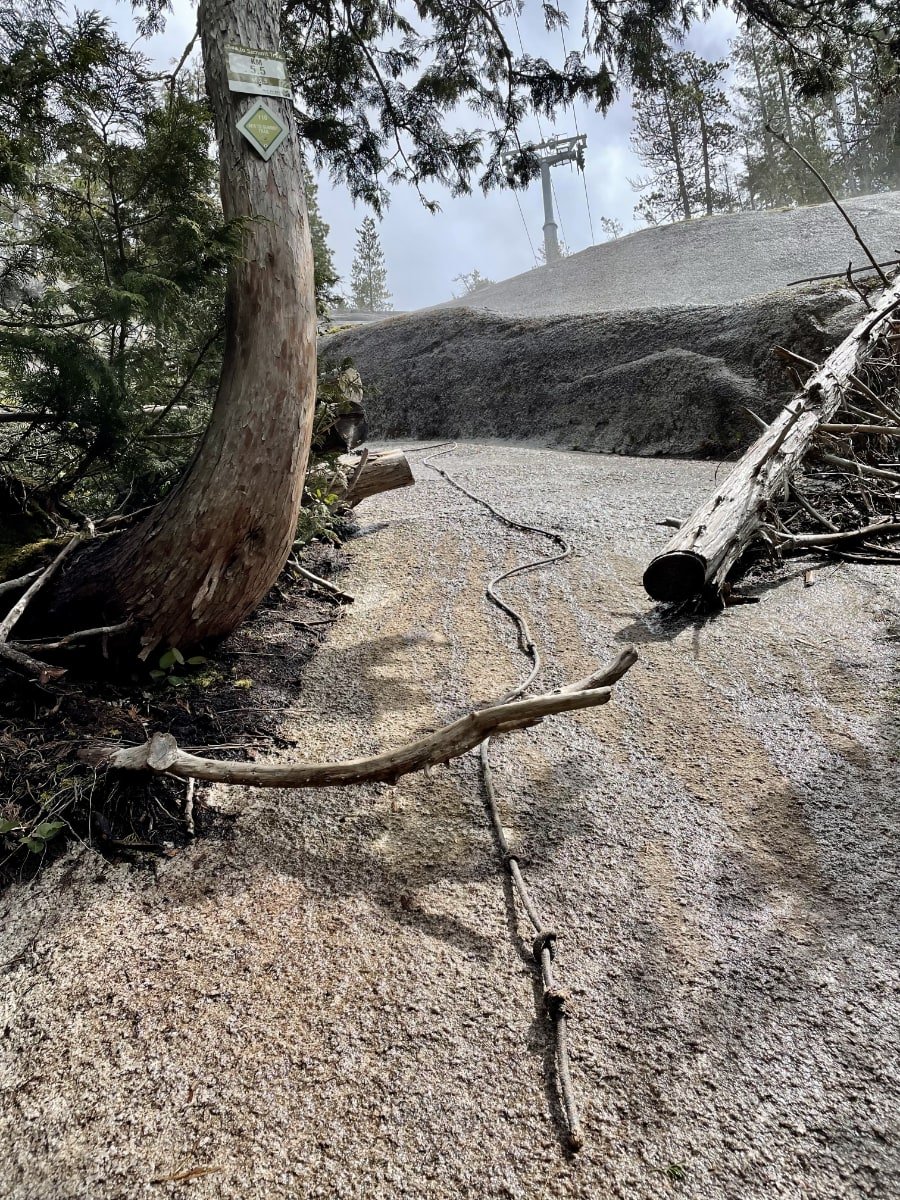
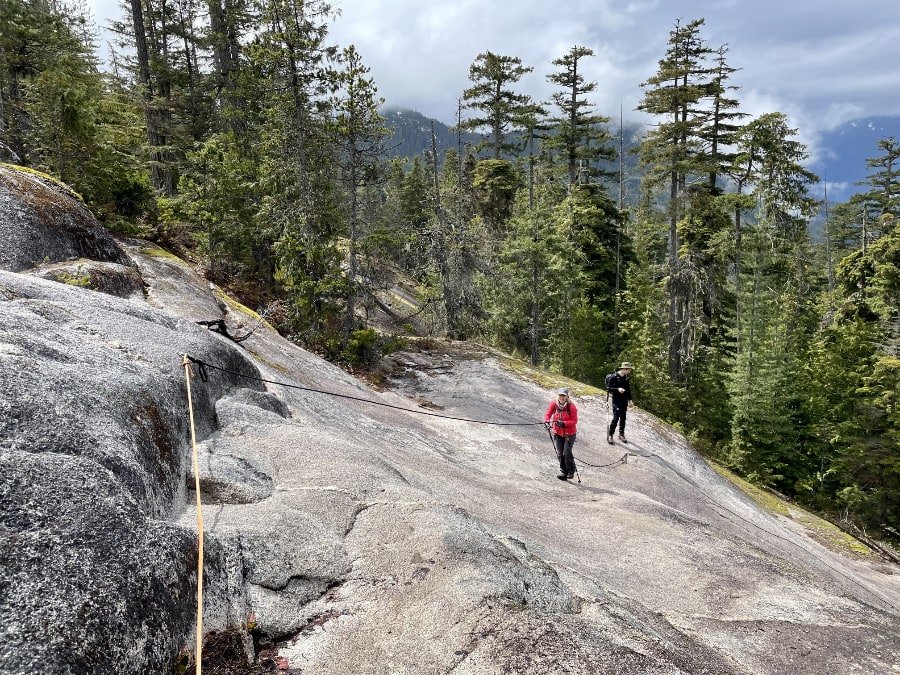
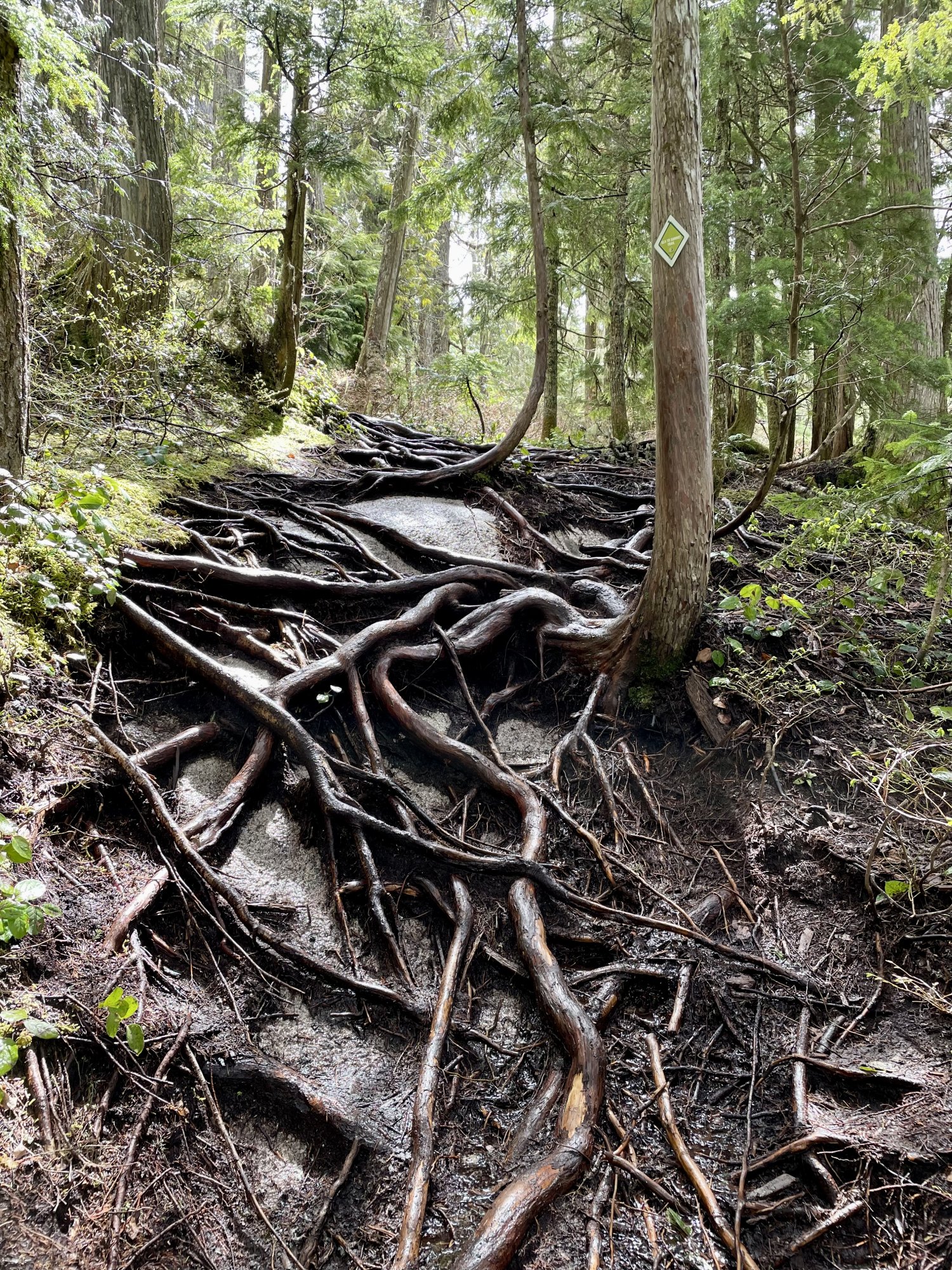
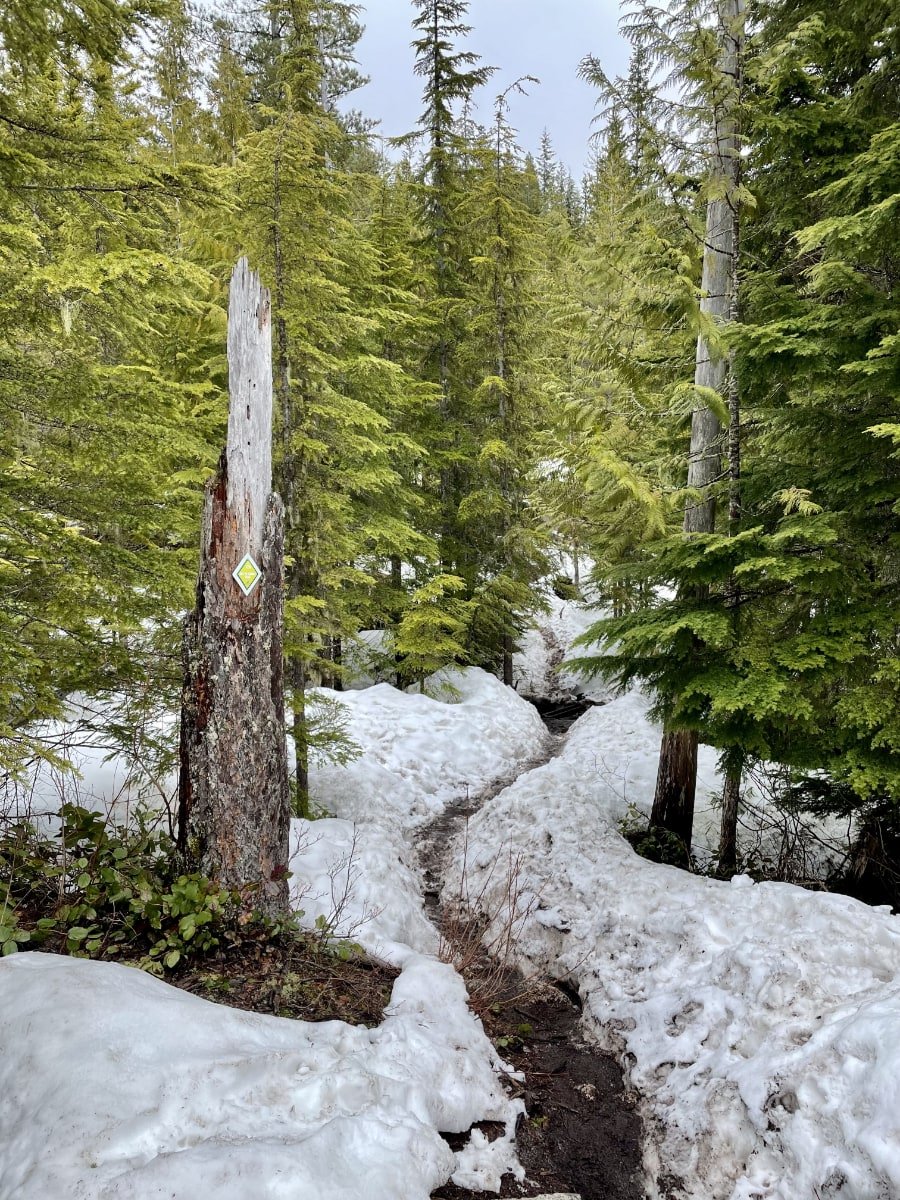
The Touristy Let-Down at the Top
I understand that the gondola allows people who might otherwise never get to the top of the mountain to see the awesome views, but there's something unsatisfying about getting there after several hours of toughing it out only to see tons of people just stepping off the gondola and swarming around the viewpoints to take and share their social media shots. I can't say that I didn't appreciate having a private toilet at the top since it was hard to find private spots to go on the trail with all the people. Admittedly, the sky bridge was kind of cool too, even though I felt like a bit of a dork lining up to walk across to get my mandatory social media shot.
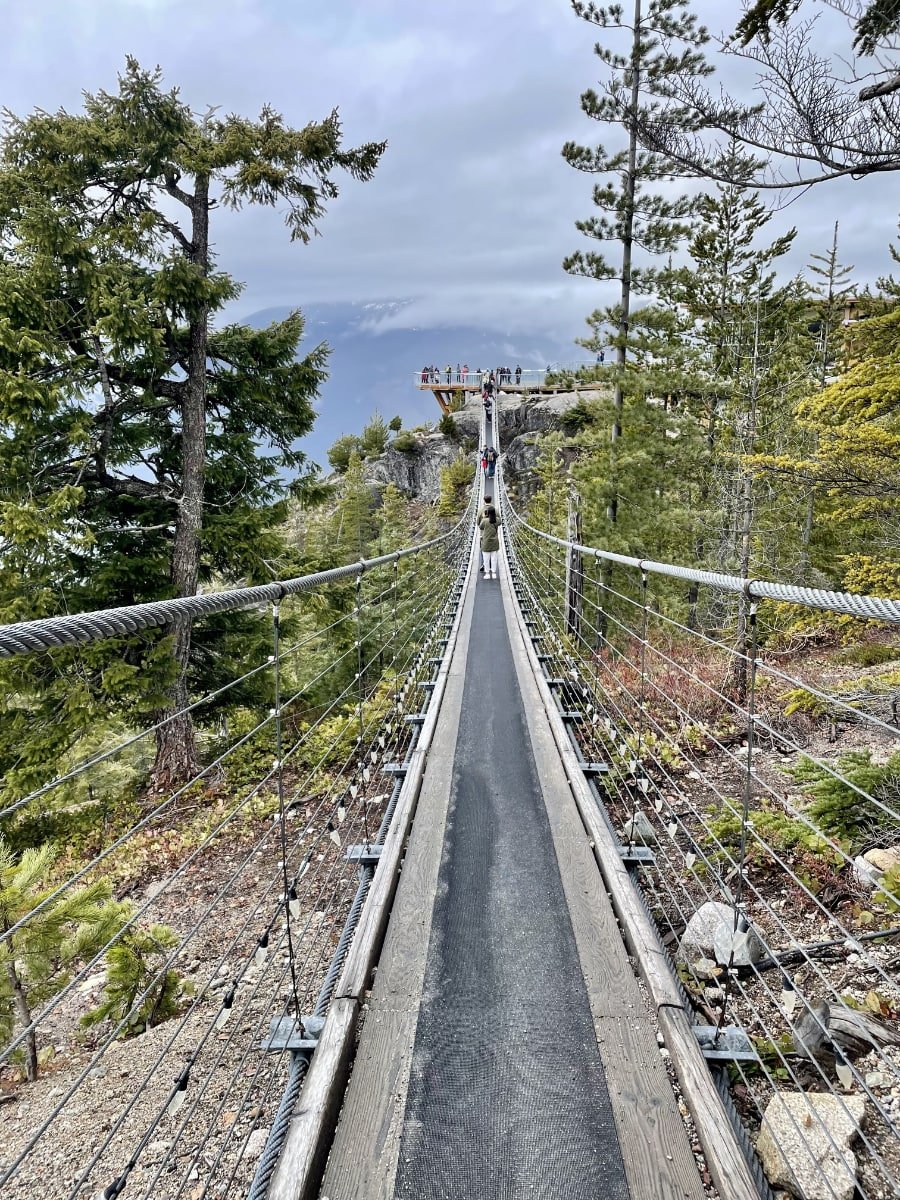
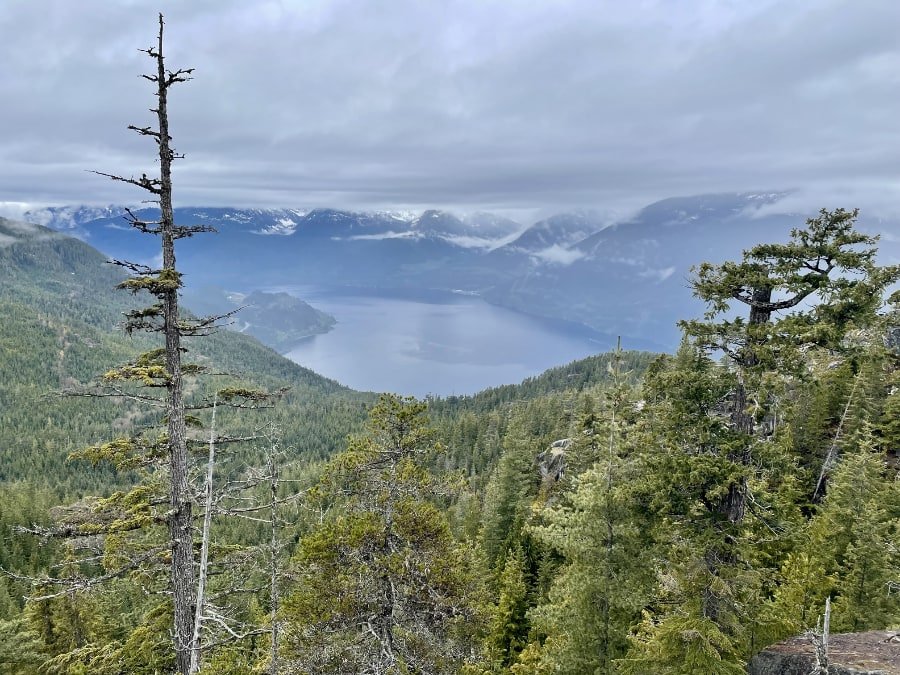
Also, it was a challenging enough trail that not being able to camp the night at the top (not an option on this trail), that it would be a bit of a slog to have to hike down again all in one day for most people, so having the gondola ride to get down is necessary for most. The views from ride down were pretty awesome, I have to admit.
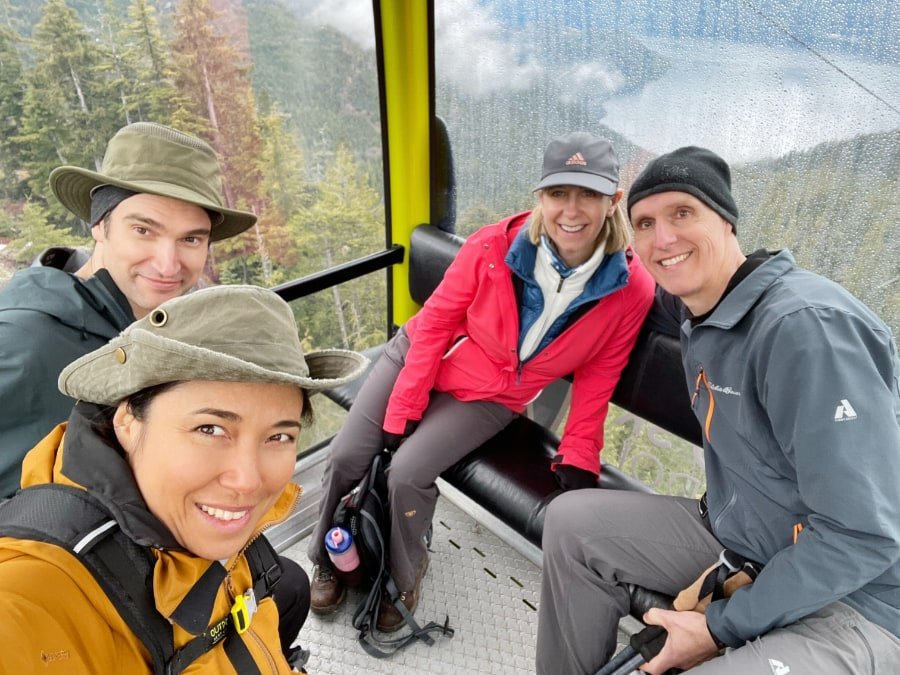
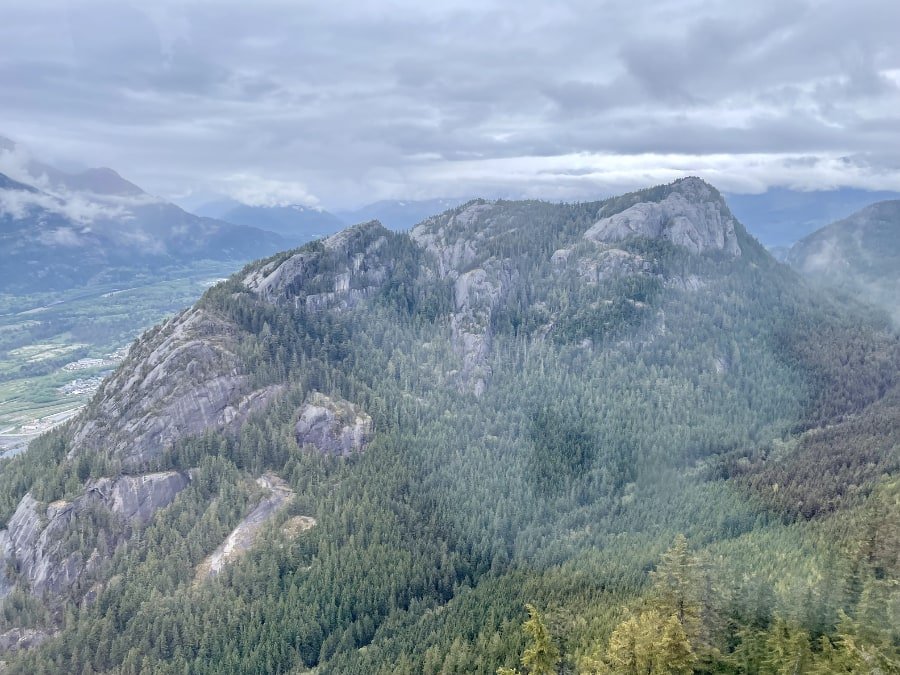
Overall, I liked the type of hiking terrain you get on the Sea-to-Summit trail, if not the crowds or it's touristy nature. I'm glad I did it, if for nothing but to see what all the hype was about. I probably wouldn't do it again as I feel there are far better, more interesting, much less populated trails around, but it's a good option for taking people from out of town who would like the benefit of a gondola ride on the way down (or both ways if hiking isn't possible). Keep an eye out for part 2 of my Tale of Two Vancouver-Area Trails trip report series in which I'll be posting about our experience hiking and camping on the Tikwalus Heritage.
Now over to you. Have you hiked the Sea-to-Summit Trail? What did you think of it? Please share your thoughts in the comments so we can all benefit from them.

